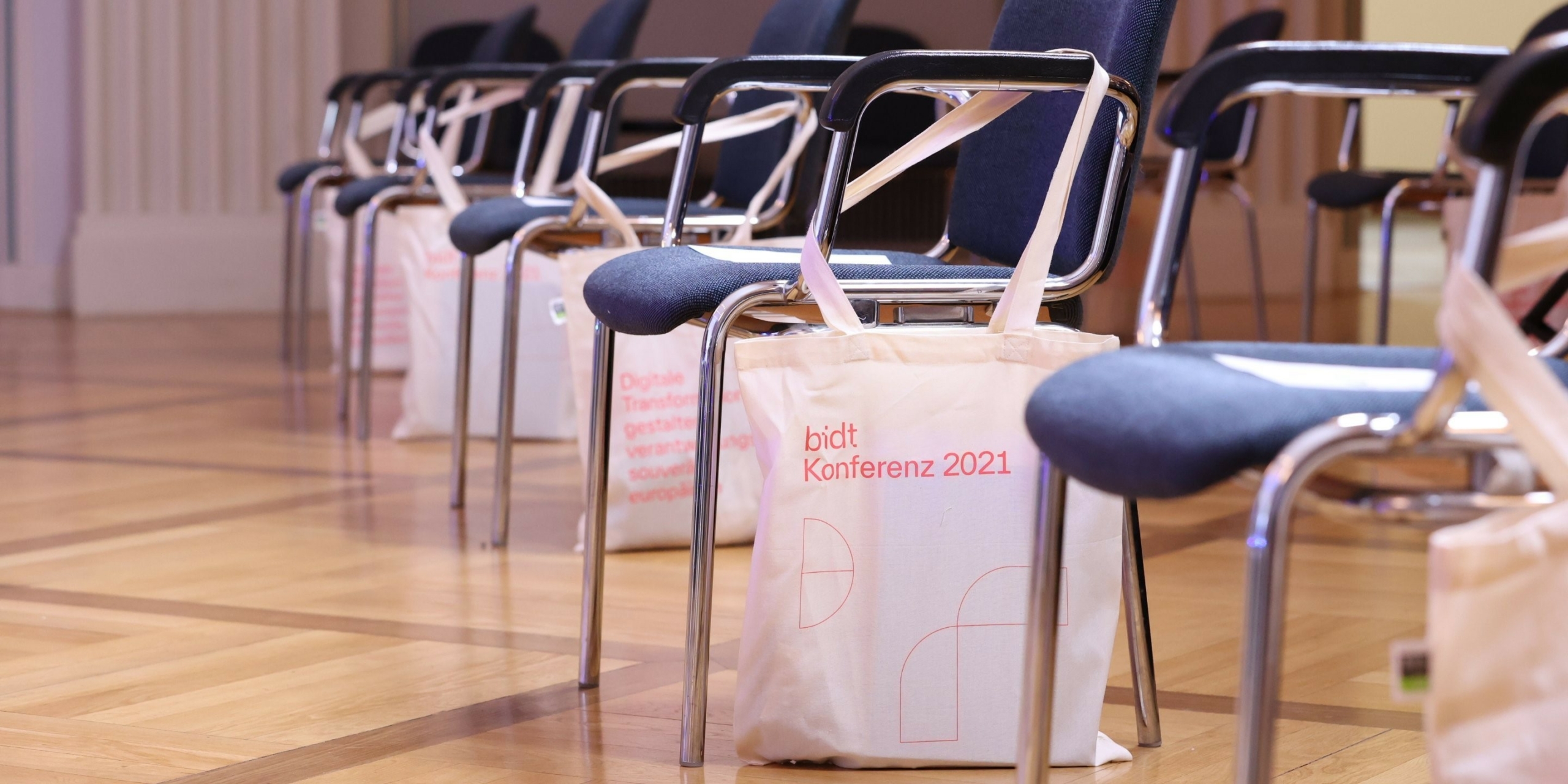The ifo Business Climate Index is often referred to as a representative study, investigating inter alia German companies’ digitisation progress. The Data collected attracts a great deal of media attention in Germany. However, the survey’s metadata, which is a rich source of information about companies and their behaviour, has so far received little public or academic attention.

The ifo Business Climate Index is a representative survey of German firms. This survey collects responses from about 9,000 firms representing various size groups and operating in different economic sectors. The data collected receives considerable attention in the German media, as it provides key indicators for current economic developments. Despite this, the general public as well as academic researchers have paid limited attention to the survey’s metadata, which itself represents a rich source of information about firms and their behaviour. We use this metadata, specifically regarding the way firms respond to surveys, to obtain an alternative measure of digital technology’s adoption by German firms. To that end, we exploit the survey’s feature that allows firms to choose their response mode: by post, by fax, or online. We consider online submission of the form itself as a measure of digital technology adoption by firms, because it is likely to be correlated with the usage of digital technologies in other work domains within a firm. We investigate how firms adopt the option to fill the survey online over time and explore heterogeneity in adoption rates among firms. Surprisingly, even in 2020 only about 71% of German firms complete the survey online with considerable variations both across industries and throughout regions.
A piece of metadata such as the response mode may seem less informative than direct questions, as asked in the surveys (for example, on the available ICT capital or particular digital technologies used by a firm). On an individual level, it is likely that there is significant “noise”: e.g. a firm may be lagging behind in terms of digitalisation, but the person responding to the survey happens to do so online, or vice versa. However, such cases are likely to cancel out when information is aggregated across a large number of firms. The share of firms adopting online response mode in a region or an industry can thus be informative in regard to digitalisation trends. Furthermore, because this response mode is not usually analysed by researchers and hence not considered by firms as relevant information, our metric is less biased by desirability. Demand effects may play a role even in anonymous surveys, for instance because a firm would like to see their industry do particularly well on a certain indicator, such as technology adoption. Another advantage is that this measure captures the actual usage of a technology (computer, Internet) by a firm’s employee, rather than mere technology availability within a firm.
Klicken Sie auf den unteren Button, um den Inhalt von Datawrapper zu laden.
We first look at the share of firms submitting their responses online by industry. The industry ranking according to this indicator is not surprising overall and is in line with expectations regarding which industries are more or less digitally advanced. Firms in manufacturing and services are more likely to choose an online response mode than those in trade and construction. While there is an overall trend towards becoming more digital, the pace of adoption has varied between industries [1]. Moreover, there is still room for more digitalisation in all industries. In the latest data from 2020, more than 20% of manufacturing and services firms did not respond to the survey online. In the construction sector, less than half responded online.
Klicken Sie auf den unteren Button, um den Inhalt von Datawrapper zu laden.
The differences between industries cannot be explained simply by the selection of big or small firms. While on average the share of firms choosing to respond online is larger among bigger firms, from 2016 smaller firms have caught up rapidly reducing the difference along this indicator from almost 20 percentage points in 2010 to 5-10 percentage points by 2019 and 2020.
Klicken Sie auf den unteren Button, um den Inhalt von Datawrapper zu laden.
Compared to the rest of Germany, Bavaria appears on average to be slightly more digitised despite being the largest federal state by area and having low population density in many districts. However, the trend is similar and the difference has slightly reduced over the last decade, as all of Germany has become more digitised.
Klicken Sie auf den unteren Button, um den Inhalt von Datawrapper zu laden.
The similarity in trend across German States is confirmed when we compare online responses in 2010 and 2020. All 16 federal states have seen a shift towards more online responses over the last decade. The differences in levels, though, persist with the traditional divide between East and West Germany. Baden-Württemberg and Hamburg are leading (with about 80% of firms using online forms), while Brandenburg is lagging behind (with just over 50%). As the figure shows, the East-West divide is also present within the four industries. Hence it cannot be attributed to the differences in the importance of individual industries for federal states.
Fig 5. Share of firms responding to the survey online across German federal states and industries 2020
Klicken Sie auf den unteren Button, um den Inhalt von Datawrapper zu laden.
Klicken Sie auf den unteren Button, um den Inhalt von Datawrapper zu laden.
Klicken Sie auf den unteren Button, um den Inhalt von Datawrapper zu laden.
Klicken Sie auf den unteren Button, um den Inhalt von Datawrapper zu laden.
Using the ifo Business Climate Index metadata, we observe that more and more firms across German states and industries “respond (go) online”, which we interpret as a positive development in digitalisation. The option to submit a survey response online should have reduced costs for respondents compared to filling in a survey form on paper and sending it by fax or post. Nonetheless, the number of German firms that choose to respond online is nowhere near 100%, which suggests that there is room for improvement in various aspects of digitalisation that are correlated with our measure. While the survey response mode is a potentially useful proxy for the adoption of digital technologies, future research should explore more exactly what it tells us. Is it driven by firm or employee characteristics? What can explain the observed heterogeneity across German federal states: e.g. broadband infrastructure or labour market conditions? What can explain the observed heterogeneity across industries and firms: e.g. business expectations, management styles, or labour composition?
Beyond the applications of this particular digitalisation measure, the above analyses provide an example for the potential usefulness of “coincidental” data such as survey metadata, which was not deliberately collected, but nevertheless can still generate insights.
Anmerkungen
[1] Individual movements in the graph should not be over-interpreted – for example firms were informed about the possibility to respond online each year in September, but a new online survey interface was introduced in February 2017.
Die vom bidt veröffentlichten Blogbeiträge geben die Ansichten der Autorinnen und Autoren wieder; sie spiegeln nicht die Haltung des Instituts als Ganzes wider.

Prof. Dr. Florian Englmaier
Florian Englmaier is a full Professor of Organizational Economics at LMU Munich and has been the Head of Department since fall of 2019. His research interests cover a wide range of topics in Organizational Economics, Industrial Organization, Contract Theory and Behavioral Economics. Some of his recent research projects use large data sets to analyze management practices and experiments to study team performance in non-routine analytical tasks.

Dr. Thomas Fackler
Thomas Fackler is a Postdoc at the Seminar for Organizational Economics at LMU Munich and at the Center for Industrial Organization and New Technologies at ifo Institute. Thomas‘ work explores policy-relevant determinants of innovation as well as the effects of digitization. His research studies the role of knowledge flows, patents, and competition in innovation.

Dr. Nadzeya Laurentsyeva
Nadzeya Laurentsyeva is a Postdoc at the Seminar for Organizational Economics at LMU Munich. Nadzeya’s research interests are in the fields of Organizational Economics and Economics of Migration. In her work, Nadzeya has studied the effects of labour mobility on firm productivity and innovation, the effects of technology adoption on labour market outcomes and firms‘ management practices, and the determinants of team performance.
Passend zum Thema
Welche Rolle spielen Deutschland und Europa im weltweiten digitalen Wettbewerb? Dieser Leitfrage verschrieb sich die zweitägige bidt Konferenz 2021 am 13. und 14. Oktober. Die Ergebnisse der hybriden Veranstaltung im Überblick.
Daten sind zentraler Innovationstreiber. Sie bilden die Grundlage für eine Vielzahl an Geschäftsmodellen und für staatliches Handeln. Wann aber geben wir Daten eher bereitwillig preis und unter welchen Umständen auf keinen Fall? Welche Rolle spielen dabei kulturelle Prägungen oder der rechtliche Rahmen?



